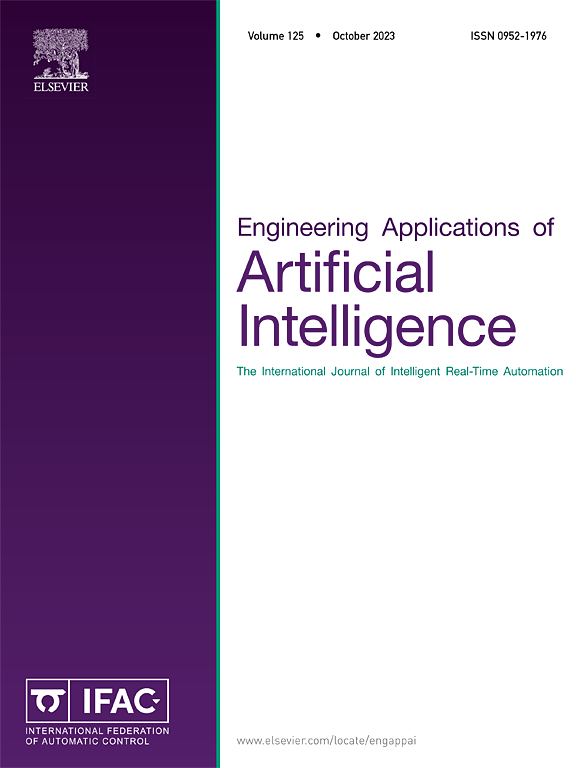An improved framework for breast ultrasound image segmentation with multiple branches depth perception and layer compression residual module
IF 7.5
2区 计算机科学
Q1 AUTOMATION & CONTROL SYSTEMS
Engineering Applications of Artificial Intelligence
Pub Date : 2025-02-17
DOI:10.1016/j.engappai.2025.110265
引用次数: 0
Abstract
Breast cancer is becoming a leading cause of death among women worldwide. Early detection is essential for improving survival rates and facilitating targeted medical treatments. Automated segmentation of breast tumors from ultrasound images is vital for this early diagnosis. To tackle challenges such as low contrast, unclear lesion boundaries, and class imbalance in breast ultrasound images, a multiple branches depth perception network was introduced, using a symmetric encoder and decoder architecture. In the initial feature extraction stage, the network’s encoder employs the multiple branches depth residual block to integrate feature information from multiple branches while employing dilated convolution to capture intricate contextual details, enhancing the characterization of complex features. Subsequently, in the feature recovery stage, the network utilizes dual path depth perception block to mitigate information loss in deep networks by leveraging dual path residual connections, extracting rich textural and structural features from breast ultrasound images. Furthermore, the layer compression residual module and attention refinement module were incorporated within the skip connections to strengthen the contextual relationships between the encoder and decoder, leading to improved segmentation of breast lesions. Extensive qualitative and quantitative evaluations on two challenging public datasets were conducted to assess the effectiveness and generalizability of the proposed approach. The experimental results demonstrate the reliability of the proposed method in clinical treatment, achieving segmentation mean intersection over union scores of 91.11% and 92.28% on these respective datasets.

求助全文
约1分钟内获得全文
求助全文
来源期刊

Engineering Applications of Artificial Intelligence
工程技术-工程:电子与电气
CiteScore
9.60
自引率
10.00%
发文量
505
审稿时长
68 days
期刊介绍:
Artificial Intelligence (AI) is pivotal in driving the fourth industrial revolution, witnessing remarkable advancements across various machine learning methodologies. AI techniques have become indispensable tools for practicing engineers, enabling them to tackle previously insurmountable challenges. Engineering Applications of Artificial Intelligence serves as a global platform for the swift dissemination of research elucidating the practical application of AI methods across all engineering disciplines. Submitted papers are expected to present novel aspects of AI utilized in real-world engineering applications, validated using publicly available datasets to ensure the replicability of research outcomes. Join us in exploring the transformative potential of AI in engineering.
 求助内容:
求助内容: 应助结果提醒方式:
应助结果提醒方式:


